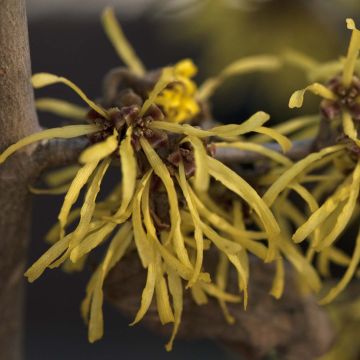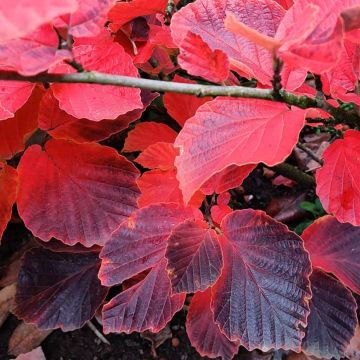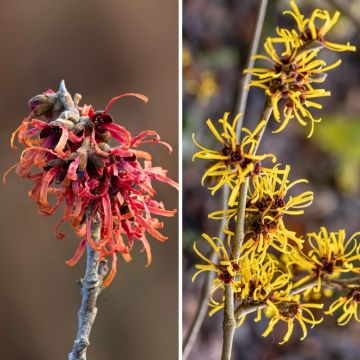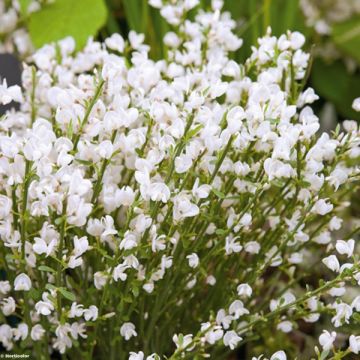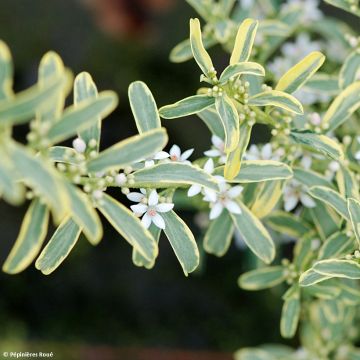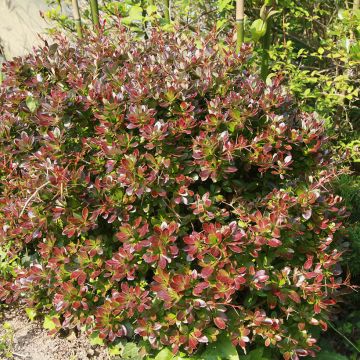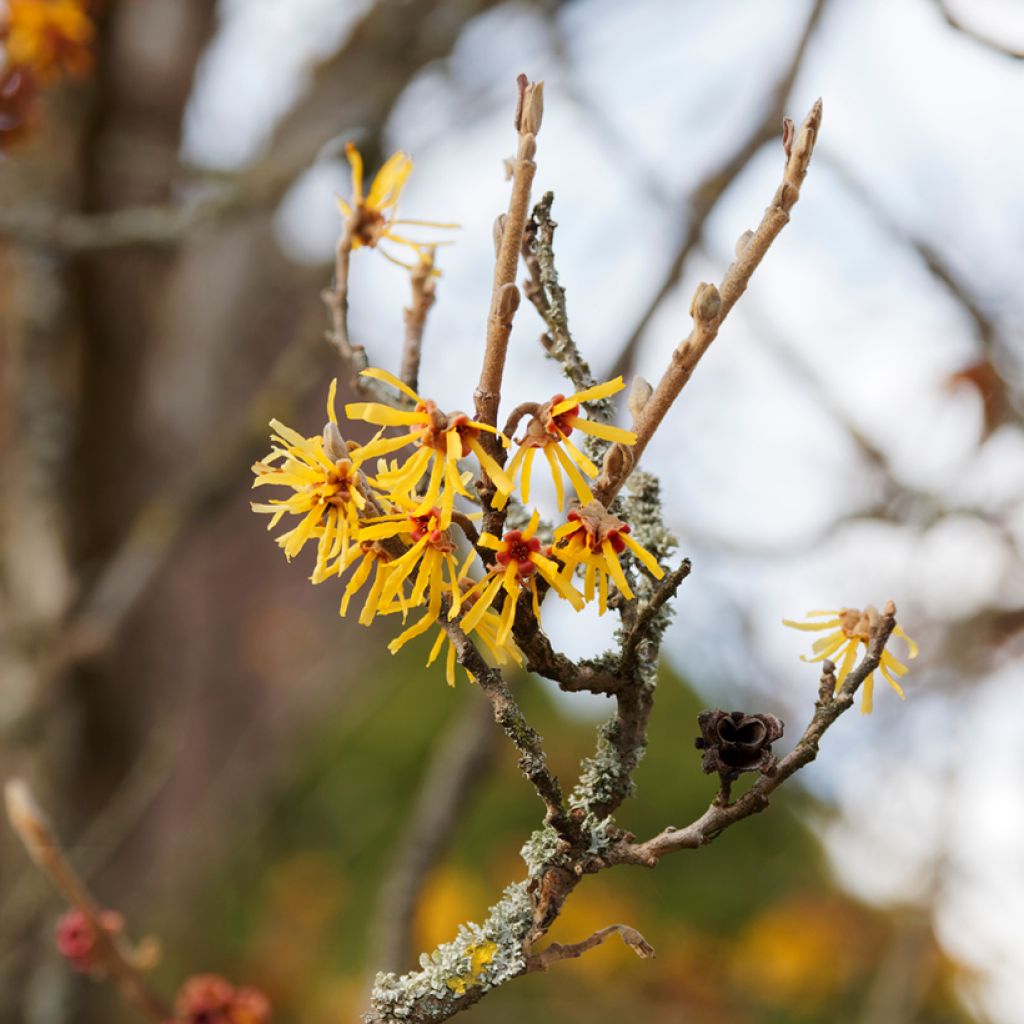

Hamamelis mollis Pallida - Witch Hazel


Hamamelis mollis Pallida - Witch Hazel
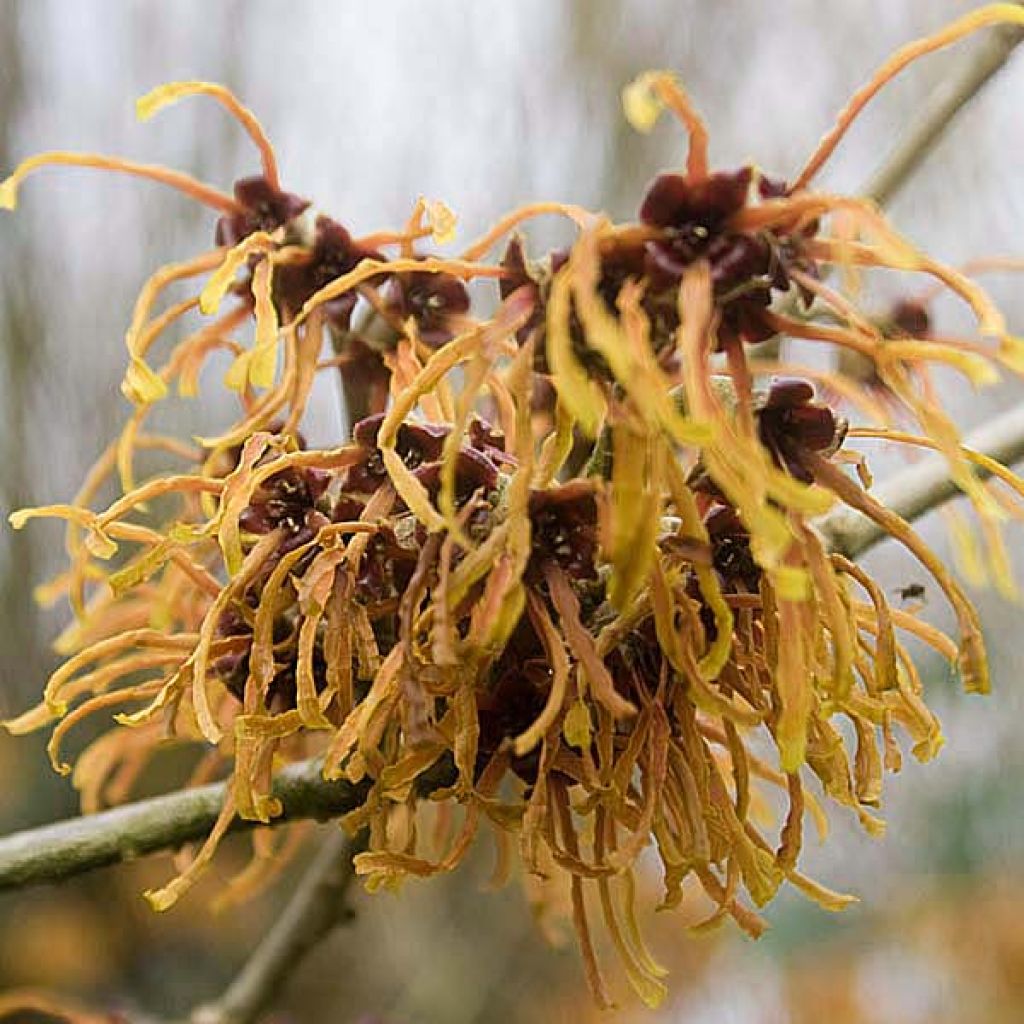

Hamamelis mollis Pallida - Witch Hazel


Hamamelis mollis Pallida - Witch Hazel
Hamamelis mollis Pallida - Witch Hazel
Hamamelis mollis Pallida
Witch Hazel
This item cannot be shipped to the selected country
Delivery charge from €5.90
Delivery charge from €5.90
More information
Schedule delivery date,
and select date in basket
This plant carries a 24 months recovery warranty
More information
We guarantee the quality of our plants for a full growing cycle, and will replace at our expense any plant that fails to recover under normal climatic and planting conditions.
From €5.90 for pickup delivery and €6.90 for home delivery
Express home delivery from €8.90.
From €5.90 for pickup delivery and €6.90 for home delivery
Express home delivery from €8.90.


Does this plant fit my garden?
Set up your Plantfit profile →
Description
It is rare to find winter-flowering bushes that match the spectacular flamboyance of the 'Pallida' Witch Hazel. While the garden is dormant, waiting for spring, Pallida surprises with its remarkable yellow-sulphur flowers that give off a delightful fragrance. The Witch Hazel 'Pallida' is a true feast for the senses! It adds elegance to the garden in spring and summer with its long branches and medium green foliage. Its leaves blaze in bright yellow in autumn - a bold nod to the upcoming winter spectacle.
The Hamamelis mollis, also known as the Chinese Witch Hazel, is a bush from the Hamamelidaceae family. This species is recognised by its fragrance, which is more intense than in other species of the family, such as the Virginia Witch Hazel.
The 'Pallida' cultivar, very popular, has a spreading habit, wider than tall, which brings elegance to a shrub border and clarity to a dull-coloured wall. Eventually (after about ten years in the ground), it can reach a spread of 4 to 5 metres.
Sulphur-yellow flowers, tinged with purple, bloom from January to February, filling the garden with a light honey fragrance. The flowers are adorned with four petals shaped like small crumpled ribbons and are unique, making them spectacular in a winter bouquet. In summer, small oval capsules will carry their fruits, which contain two black seeds and will be dispersed when they ripen at over 5m (16 ft).
The tree's green, deciduous foliage emerges after the flowers in spring and looks similar to that of hazelnut trees despite not being part of the same botanical family. It is truly breathtaking during autumn with its stunning yellow leaves that are edged in red.
The Witch Hazel is a hardy bush that can withstand temperatures as low as -20°C. It thrives in acidic and moist soils and prefers moderate sunlight, as intense sunlight can be damaging. Protection from drying winds is also essential. It is possible to grow it in a semi-shaded area; however, the flowering may be less prominent. It's still possible to grow it in a container when young, allowing you to appreciate its stunning colours on your terrace or near entrances.
The Witch Hazel thrives in acidic soils, making it an ideal companion for other acid-loving plants with evergreen foliage and winter flowering, like Camellias, Azaleas, Dwarf Rhododendrons, Sarcococca, or Daphne. To create a stunning mass effect, you can plant it in groups of three or five. For the best view of its beauty and fragrance, plant it as a standalone tree in a pot near your house or against a backdrop of conifers, evergreen shrubs, or grasses that will enhance its delicate flower's beauty. You can also plant it with spring shrubs like Forsythia, which will take over the floral display in the garden. If you choose to plant it in a container or large pot, it can be combined with Holly, a rock garden conifer, or Spindle Tree. To accompany the foliage in autumn and spring when the Witch Hazel appears bare, you can decorate the base of the bush with Winter Heathers, Hellebores or bulbs.
Report an error about the product description
Hamamelis mollis Pallida - Witch Hazel in pictures


Plant habit
Flowering
Foliage
Botanical data
Hamamelis
mollis
Pallida
Hamamelidaceae
Witch Hazel
Cultivar or hybrid
Other Hamamelis - Witch-hazel
Planting and care
To fully enjoy the beauty of your Witch Hazel and its fragrance, plant it near your house so that it stands out against a dark background of evergreen foliage. Being sensitive to limestone, it should be grown in ericaceous or non-limestone soil enriched with leaf compost. Witch Hazels do not thrive in limestone soils. They show it by yellowing leaves in summer and reduced flowering. During planting, add ericaceous soil to help the plant establish itself.
Planting period
Intended location
Care
-
, onOrder confirmed
Reply from on Promesse de fleurs
Hedge shrubs
Haven't found what you were looking for?
Hardiness is the lowest winter temperature a plant can endure without suffering serious damage or even dying. However, hardiness is affected by location (a sheltered area, such as a patio), protection (winter cover) and soil type (hardiness is improved by well-drained soil).

Photo Sharing Terms & Conditions
In order to encourage gardeners to interact and share their experiences, Promesse de fleurs offers various media enabling content to be uploaded onto its Site - in particular via the ‘Photo sharing’ module.
The User agrees to refrain from:
- Posting any content that is illegal, prejudicial, insulting, racist, inciteful to hatred, revisionist, contrary to public decency, that infringes on privacy or on the privacy rights of third parties, in particular the publicity rights of persons and goods, intellectual property rights, or the right to privacy.
- Submitting content on behalf of a third party;
- Impersonate the identity of a third party and/or publish any personal information about a third party;
In general, the User undertakes to refrain from any unethical behaviour.
All Content (in particular text, comments, files, images, photos, videos, creative works, etc.), which may be subject to property or intellectual property rights, image or other private rights, shall remain the property of the User, subject to the limited rights granted by the terms of the licence granted by Promesse de fleurs as stated below. Users are at liberty to publish or not to publish such Content on the Site, notably via the ‘Photo Sharing’ facility, and accept that this Content shall be made public and freely accessible, notably on the Internet.
Users further acknowledge, undertake to have ,and guarantee that they hold all necessary rights and permissions to publish such material on the Site, in particular with regard to the legislation in force pertaining to any privacy, property, intellectual property, image, or contractual rights, or rights of any other nature. By publishing such Content on the Site, Users acknowledge accepting full liability as publishers of the Content within the meaning of the law, and grant Promesse de fleurs, free of charge, an inclusive, worldwide licence for the said Content for the entire duration of its publication, including all reproduction, representation, up/downloading, displaying, performing, transmission, and storage rights.
Users also grant permission for their name to be linked to the Content and accept that this link may not always be made available.
By engaging in posting material, Users consent to their Content becoming automatically accessible on the Internet, in particular on other sites and/or blogs and/or web pages of the Promesse de fleurs site, including in particular social pages and the Promesse de fleurs catalogue.
Users may secure the removal of entrusted content free of charge by issuing a simple request via our contact form.
The flowering period indicated on our website applies to countries and regions located in USDA zone 8 (France, the United Kingdom, Ireland, the Netherlands, etc.)
It will vary according to where you live:
- In zones 9 to 10 (Italy, Spain, Greece, etc.), flowering will occur about 2 to 4 weeks earlier.
- In zones 6 to 7 (Germany, Poland, Slovenia, and lower mountainous regions), flowering will be delayed by 2 to 3 weeks.
- In zone 5 (Central Europe, Scandinavia), blooming will be delayed by 3 to 5 weeks.
In temperate climates, pruning of spring-flowering shrubs (forsythia, spireas, etc.) should be done just after flowering.
Pruning of summer-flowering shrubs (Indian Lilac, Perovskia, etc.) can be done in winter or spring.
In cold regions as well as with frost-sensitive plants, avoid pruning too early when severe frosts may still occur.
The planting period indicated on our website applies to countries and regions located in USDA zone 8 (France, United Kingdom, Ireland, Netherlands).
It will vary according to where you live:
- In Mediterranean zones (Marseille, Madrid, Milan, etc.), autumn and winter are the best planting periods.
- In continental zones (Strasbourg, Munich, Vienna, etc.), delay planting by 2 to 3 weeks in spring and bring it forward by 2 to 4 weeks in autumn.
- In mountainous regions (the Alps, Pyrenees, Carpathians, etc.), it is best to plant in late spring (May-June) or late summer (August-September).
The harvesting period indicated on our website applies to countries and regions in USDA zone 8 (France, England, Ireland, the Netherlands).
In colder areas (Scandinavia, Poland, Austria...) fruit and vegetable harvests are likely to be delayed by 3-4 weeks.
In warmer areas (Italy, Spain, Greece, etc.), harvesting will probably take place earlier, depending on weather conditions.
The sowing periods indicated on our website apply to countries and regions within USDA Zone 8 (France, UK, Ireland, Netherlands).
In colder areas (Scandinavia, Poland, Austria...), delay any outdoor sowing by 3-4 weeks, or sow under glass.
In warmer climes (Italy, Spain, Greece, etc.), bring outdoor sowing forward by a few weeks.

































